There are more than 5 million seniors in America with a form of dementia, such as Alzheimer’s disease. Nearly 80 percent of these individuals will eventually develop symptoms like anxiety, aggression, hallucinations, wandering or delusions. These symptoms are also known as “challenging behaviors,” and they are often an impetus that causes families to place their loved ones in a memory care community.
“As the senior population in America grows, caregivers and health professionals will end up dealing with challenging behaviors on a more regular basis,” says Addie Ricci, Executive Director at Bridges® by EPOCH at Norwalk, located in Norwalk, CT. “While these behaviors are due to physical and chemical changes taking place in the brain, there are things we can do to help manage, mitigate and influence these behaviors in positive and beneficial ways.”
While certain medications can be helpful with some behavioral issues, Addie says that there are many non-pharmacological approaches that can be used with even better success – and with fewer underlying side effects.
“Many times, the behaviors exhibited by an individual with dementia are because he or she is trying to communicate a need that is being unmet,” she says. This is based on many experts’ belief that behaviors are merely a form of communication. “So, for example, a senior who is being stubborn or resistant may simply be reacting to a lack of control in their lives, or they’re unsure about what is happening or a variety of other reasons,” she says.
As with most aspects of dementia, there is one, logical reason as to why a senior may exhibit challenging behaviors. It’s up to caregivers and loved ones to look for clues and determine what is causing their loved one to act in a certain way – and then take steps to correct it.
“We do our loved ones a disservice when we talk about behaviors as bad,” says Addie. “This implies that this is happening on purpose or for some malicious reason. Even though it’s difficult and frustrating to be on the receiving end of your loved one’s actions, it’s important to remember that these are symptoms of the disease – not due to any defect on your loved one’s part. By framing their actions as caused by an illness, they are easier to understand, and we’re often able to approach the situation with a little more patience.”
The first step to managing challenging behaviors is by doing a little detective work. Caregivers and their loved ones should first rule out any straightforward physical issues that may be causing their loved one stress or pain. Injury, constipation, uncomfortable clothes, feeling cold or feeling hot – anything that is a physical-related trigger should be searched for and, if found, taken care of. However, it’s essential to keep an open mind – a loved one may complain about their arm hurting, but may actually be experiencing a bladder infection or a stomachache.
After checking out any physical-related issues, caregivers should look at the daily routine or the events of the previous day to evaluate if anything has recently happened to trigger their loved one. Perhaps he or she stayed up too late last night, or overextended themselves during the day. Behaviors can be triggered by something as small (in your mind) as hanging up holiday decorations, so you may need to think “outside the box” when it comes to hunting for clues.
The list of triggers as to “why” your loved one is acting in a challenging way is long and is different for each individual person. However, there are things you can do as a caregiver to help manage behaviors and provide a safe, calm and controlled environment so your loved one feels secure.
Reassure your loved one. Oftentimes, your loved one may be acting out because they’re frightened, confused or feeling lost. No matter what the reason, it’s always good to soothe and reassure your loved one. Keep your voice calm and validate his or her feelings. “You seem upset and I’m sorry.” “I know you’re scared, but I’m right here for you.” “You’re not alone – I’m here and I will keep you safe.”
Distract and deflect. Caregivers already know that, sometimes, shifting your loved one’s attention can get them to stop doing something worrisome or annoying (for example, asking the same question over and over). Try a change of environment, such as going for a walk outside, or suggest an activity like an impromptu dance party, singing a song or asking for help with a chore.
Encourage exercise. It should come as no surprise that most of us don’t get enough physical activity during the day. For people with dementia, getting enough exercise helps burn off energy as well as keeping them healthy. Be sure that you and your loved one get enough exercise during the day so that they’re “worn out” by bedtime. Remember that exercise doesn’t have to be “official” – washing dishes, gardening or taking a nightly walk are all great options.
Make sure your loved one has plenty of engaging activities. Boredom is a huge trigger for unwanted behaviors. Wandering, in particular, is often in response to a person with dementia looking for something “to do” (although it’s not nearly as logical and straightforward as that). Keeping your loved one’s brain entertained and stimulated throughout the day will help them feel fulfilled, entertained and happy. Remember that activities don’t have to be huge, either. Involve your loved one in day-to-day activities, like folding laundry, sorting silverware or an easy craft project. Baking is another fun activity that you can both do together.
Create a soothing environment. Agitation and anxiety (like sundowning) can often be mitigated or avoided by creating a soothing and gentle environment for your loved one. Techniques like aromatherapy, pet therapy, gentle white noise, soothing foods, singing songs and gentle, loving touches can be used to help reduce stress and help your loved one settle down. Other things you can do is to limit the use of caffeine during the day, avoiding naps when possible, offering a light snack at bedtime and making sure that rooms are well-lit and uncluttered.
It’s always best to try non-pharmaceutical options to help your loved one manage their challenging behaviors. However, it’s possible that you may need to speak to your doctor if you aren’t finding a solution that works for you and your loved one. Whatever the case, using patience, trial and error and these techniques can help reduce unwanted behaviors in your loved one with dementia, which will enhance the quality of life for both them and you.
Expert, Life-Enriching Memory Care
Bridges® by EPOCH at Norwalk provides memory care assisted living that is comfortable, positive, safe and engaging. Exclusively dedicated to caring for those with Alzheimer’s disease and other forms of dementia, our community promotes a wellness-focused lifestyle that emphasizes dignity and individual preferences. Our memory care professionals receive specialized, ongoing training designed to help residents maximize their independence in a secure, calm environment – making a truly positive impact on the lives of our residents.
Inspiring Programs for All Stages
Bridges® by EPOCH at Norwalk’s services are designed to recognize and adapt to the unique challenges and individuality of each resident, while ensuring comfort and safety. We believe in a full-service approach to care and provide personalized attention and programming for residents in every stage of memory loss.
Purposeful Community Design
Within a beautiful residential design, Bridges® by EPOCH at Norwalk provides everything residents with Alzheimer’s disease and other forms of dementia need to enjoy comfort, familiarity and security. Soft colors, directional cues, aromatherapy and interactive life stations create a soothing and secure environment where residents feel at home.
Contact us today to learn more.

